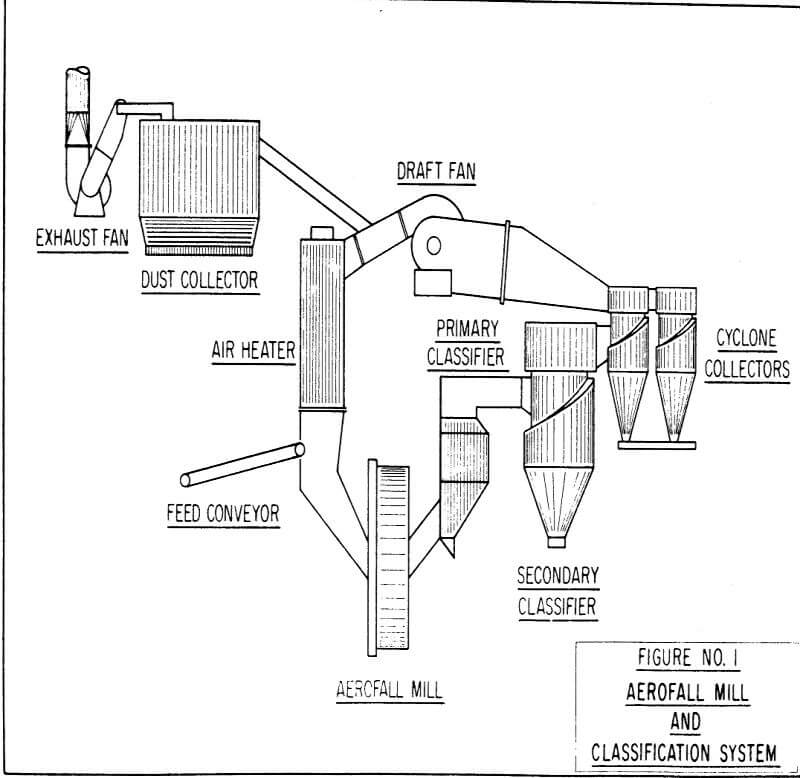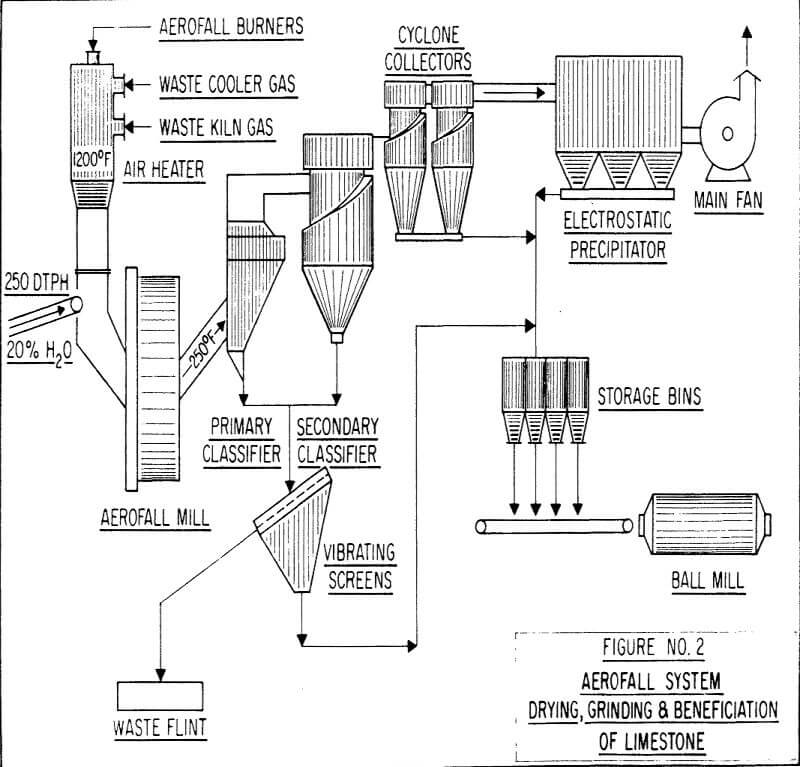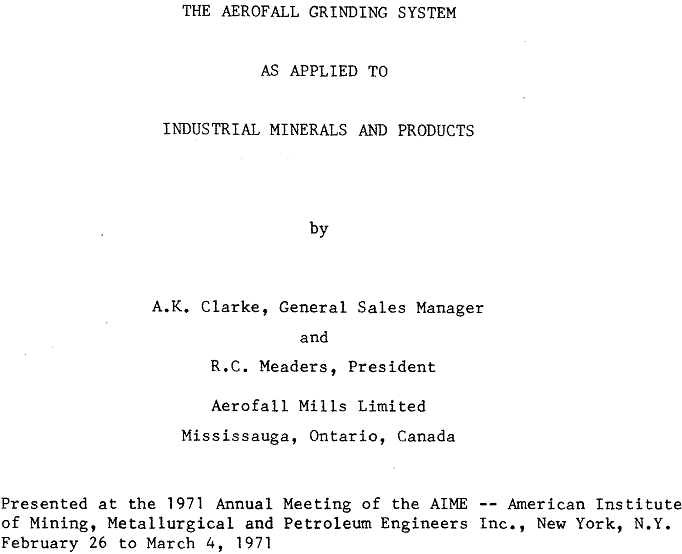In any treatment process that requires a coarse feed material to be reduced to a fine size by crushing and/or grinding it must be determined whether a wet or dry comminution system should be utilized. All factors must be evaluated in reaching the decision. Among these factors are:
- Ecology and Plant Environment
- Operating Costs
- The Subsequent Treatment Process
It is not so obvious that dry grinding can be used in a leaching plant, but there are advantages, namely:
a) The dry ground product feeding the leaching plant can be delivered at a very closely controlled rate.
b) The leach solution strength can be controlled without interference from water in the pulp,
c) Overgrinding and production of fine slimes which usually cause losses are much less of a problem in air swept mills than in wet mills. This is due to the classifying action within the dry mill itself. Finished sized particles are rapidly removed from the mill.
d) A characteristic of autogenous mills is that changes in ore hardness cause fluctuations in the grinding rate. This in turn can lead to the necessity of providing storage for the ground product. Dry storage is much more satisfactory than wet storage. In a recent wet autogenous mill installation a large thickener-agitator was installed between the mill and plant. Operating problems have been experienced in this system. This problem does not exist in a dry grinding plant. The cost of the agitator and its operating problems should have been charged to the cost of grinding. It is not known if they were. On some ores wet storage has a deleterious effect on flotation characteristics.
This system is used on a wide variety of materials having diverse chemical and physical characteristics. To illustrate this, installations treating the following materials will be discussed: 1) Limestone; 2) Petroleum Coke; 3) Ferro Silicon; 4) Iron Ore; 5) Glass Sand.
Limestone
There are ten Aerofall systems in the cement industry. One of the latest installations is in a 1.2 million tons per year cement plant in LeHavre, France. Figure 2 illustrates the raw grinding circuit used at this plant.
Petroleum Coke
In 1965 and 1966 two Aerofall mill systems were installed by the Intalco Aluminum Corporation, Ferndale, Washington. The systems, operating in parallel, grind and classify petroleum coke into three fractions. The fractions are produced at a predetermined rate. They are recombined to meet a tight particle size distribution specification.
The particle size specification of the combined products can be varied over a wide range. The range of percent minus 200 mesh in the final mix is from 10 to a maximum of 22. The corresponding range in the coarse end would be from 23 percent to 8 percent plus 4 mesh.
Ferro Silicon
A 7½ foot system is used by a Canadian Company for grinding ferro silicon. Customers require this material in many different ranges of particle size. The controls on the air system provide the necessary flexibility to meet customer demands.
Non-Magnetic Iron Ore-Specular Hematite
This material although easy to grind is extremely abrasive. The benefits derived from dry grinding in this operation are many. For example, it was recently demonstrated with this material that vibrating screen cloths in a wet plant must be replaced at least five times as often as dry screens.
This plant, as do most plants treating this type of iron ore, use gravity as a means of concentration. In this instance spirals are used which are inherently poor for the recovery of minus 150 mesh material. The production of fine sizes therefore, must be minimized. This is a major factor which led to the selection of dry air swept grinding mills.
Pilot Plant Testing and Scale-Up
- Talc Ore
This circuit would have a capacity of thirty tons per hour without the use of steel grinding media, thus avoiding iron contamination. The mill feed would be quarry run material; the final product would have a fineness of 24 percent minus 325 mesh. - Nephaline Syenite
This material is used as a flux in the manufacture of glass. For



